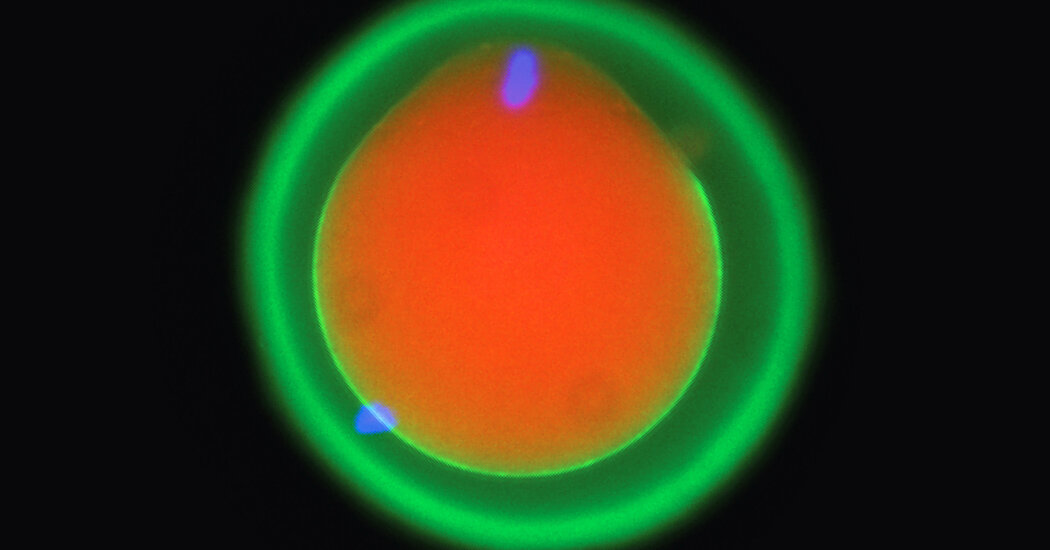Using Google’s AlphaFold, researchers identified the bundle of three sperm proteins that seem to make sexual reproduction possible.
They’re the original odd couple: One is massive, spherical and unmoving. The other is tiny, has a tail and never stops swimming. Yet the union of egg and sperm is critical for every sexually reproducing animal on Earth.
Exactly how that union occurs has long been a mystery to scientists. A study published Thursday in the journal Cell that relied on Nobel Prize-honored artificial intelligence technology shows that an interlocked bundle of three proteins is the key that lets sperm and egg bind together. That crucial bundle is shared by animals as distantly related as fish and mammals, and most likely including humans.
For nearly all animals on Earth, life begins with a sperm cell making its way to an egg’s cell membrane. Somehow, the two cells recognize each other and bind together. Then, in a flash, the sperm head passes into the egg, as if stepping through a door. Now the fused cell is a zygote and ready to grow into a new animal.
In earlier research, scientists had found four proteins on mammal sperm that are also present on fish sperm and are needed for fertilization. But no one knew whether they might work as a team to enter an egg, or how.
In the new study, Andrea Pauli, a molecular and developmental biologist at the Research Institute of Molecular Pathology in Vienna, and collaborators across several institutions asked how sperm proteins might team up during fertilization.
The researchers relied on AlphaFold, a technology that shared the Nobel Prize in Chemistry last week. It uses A.I. to predict the shape of a protein. With AlphaFold, the team could compare the four sperm proteins shared across mammals and fish against a library of about 1,400 other proteins found on cell surfaces in zebrafish testes, looking for potential partners.
